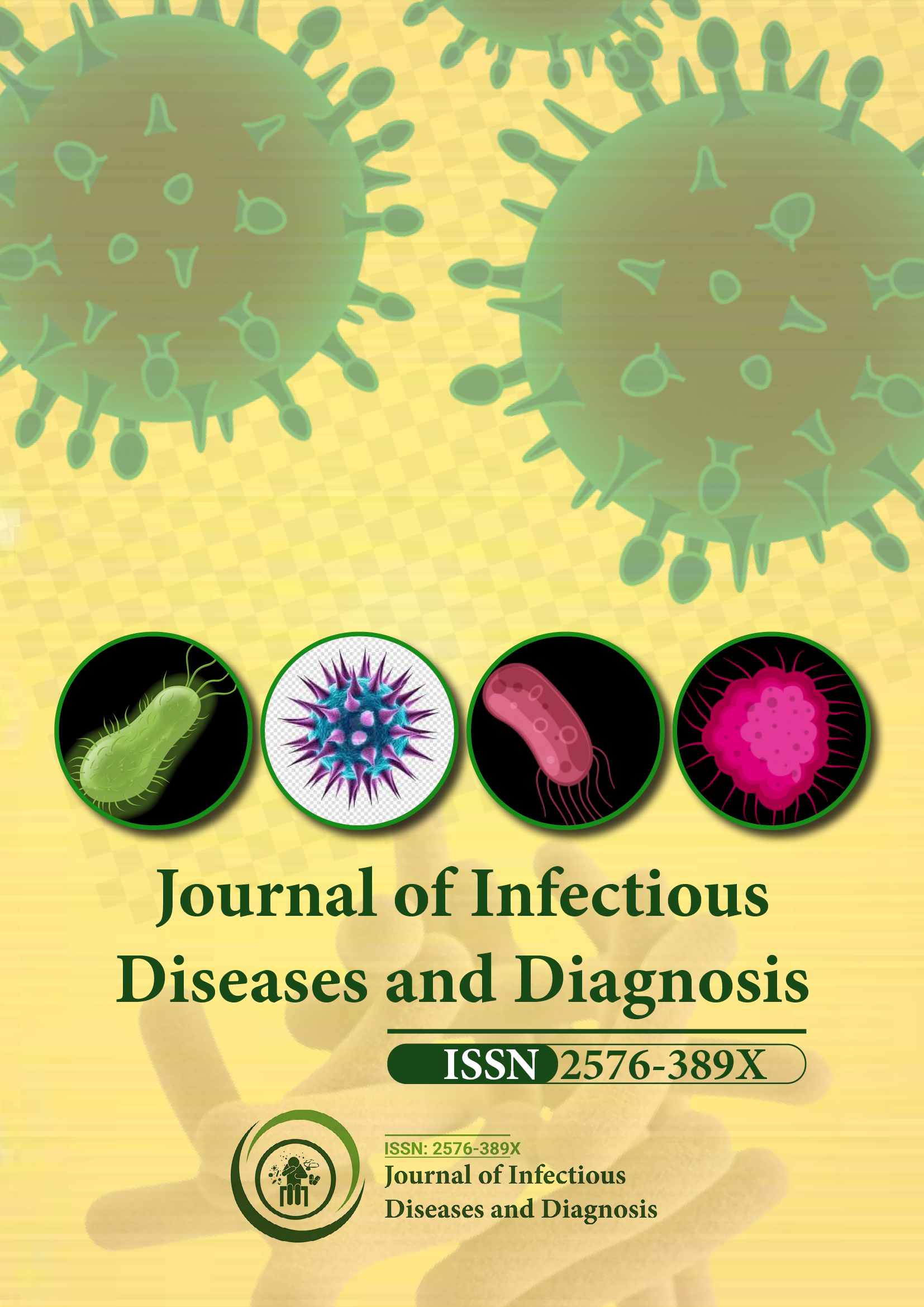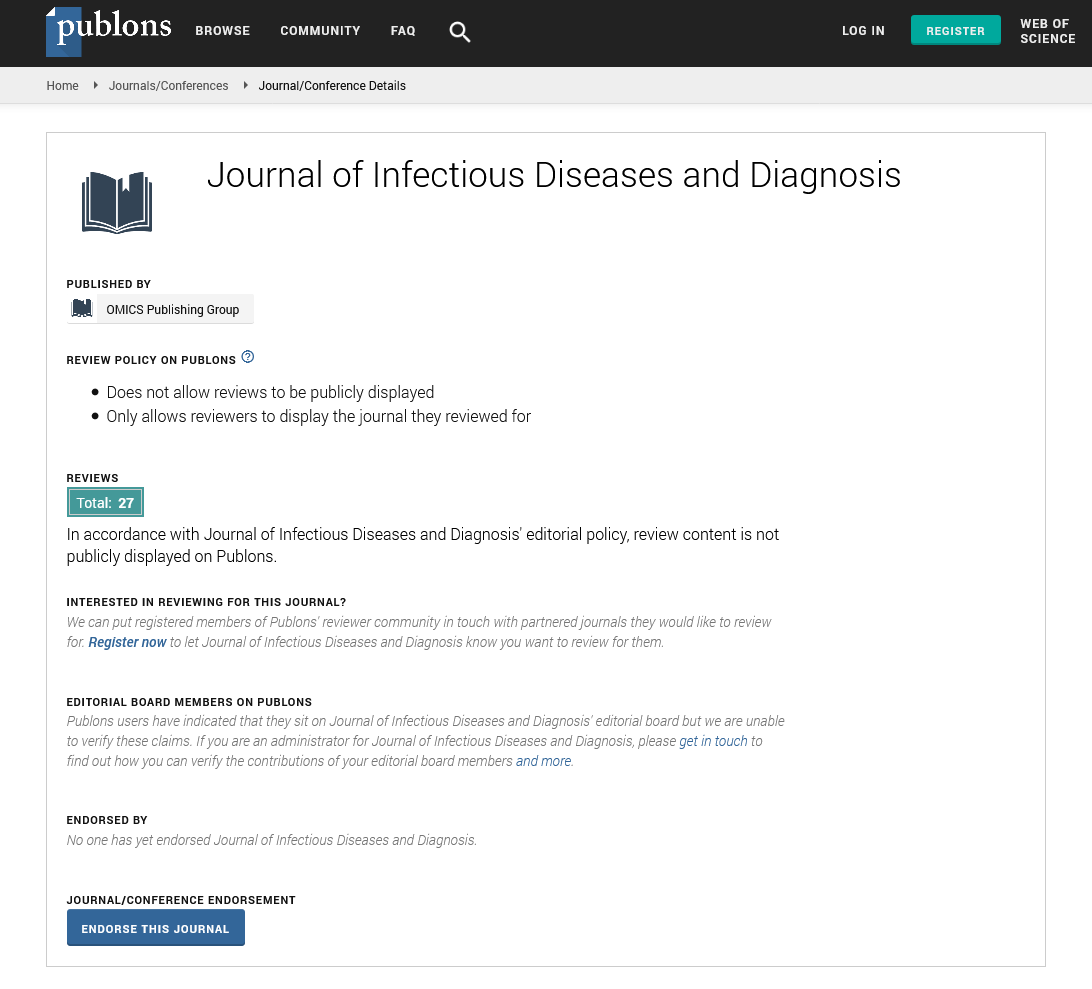Indexed In
- RefSeek
- Hamdard University
- EBSCO A-Z
- Publons
- Euro Pub
- Google Scholar
Useful Links
Share This Page
Journal Flyer

Open Access Journals
- Agri and Aquaculture
- Biochemistry
- Bioinformatics & Systems Biology
- Business & Management
- Chemistry
- Clinical Sciences
- Engineering
- Food & Nutrition
- General Science
- Genetics & Molecular Biology
- Immunology & Microbiology
- Medical Sciences
- Neuroscience & Psychology
- Nursing & Health Care
- Pharmaceutical Sciences
Commentary - (2025) Volume 10, Issue 1
Malaria and Human Health: Exploring the Impact, Innovations, Prevention and Control Strategies
Leslie Flynn*Received: 01-Jan-2025, Manuscript No. JIDD-25-28523; Editor assigned: 03-Jan-2025, Pre QC No. JIDD-25-28523 (PQ); Reviewed: 17-Jan-2025, QC No. JIDD-25-28523; Revised: 24-Jan-2025, Manuscript No. JIDD-25-28523 (R); Published: 31-Jan-2025, DOI: 10.35248/2576-389X.25.10.311
Description
Malaria is one of the oldest known infectious diseases and continues to be a leading health burden in many parts of the world. The World Health Organization (WHO) estimates that hundreds of thousands of deaths occur annually due to malaria, with the highest burden in sub-Saharan Africa. The disease is primarily transmitted through mosquito bites, making environmental factors and vector control essential in combating its spread. Despite advancements in medical research and treatment, malaria remains a major threat to public health, necessitating continuous efforts to improve prevention and therapeutic strategies.
Etiology and transmission
Malaria is caused by five species of Plasmodium parasites, with Plasmodium falciparum and Plasmodium vivax being the most common. Plasmodium falciparum is the most lethal species, responsible for severe complications and the majority of malariarelated deaths. Transmission occurs when an infected female Anopheles mosquito bites a person, injecting the parasite into the bloodstream. Once inside the body, the parasite travels to the liver, where it multiplies before infecting red blood cells, leading to the characteristic symptoms of malaria.
Human-to-human transmission does not occur directly, but the disease can be passed from mother to child during pregnancy (congenital malaria) or through blood transfusions and contaminated needles. Environmental conditions such as temperature, humidity and rainfall influence mosquito populations, affecting the disease's spread.
Clinical manifestations
Malaria symptoms typically appear 10-15 days after infection, though they can vary depending on the Plasmodium species. Common symptoms include fever, chills, sweating, headache, nausea, vomiting and muscle pain. Severe cases can lead to complications such as anemia, organ failure, cerebral malaria and even death.
The cyclical nature of malaria fever corresponds with the parasite’s life cycle in red blood cells, causing periodic fever spikes. Severe malaria, mainly caused by P. falciparum, can progress rapidly and requires urgent medical intervention.
Diagnosis and treatment
Accurate and timely diagnosis is crucial for effective malaria management. The two primary diagnostic methods are microscopic examination of blood smears and Rapid Diagnostic Tests (RDTs). Microscopy remains the gold standard, allowing direct visualization of parasites in blood samples, while RDTs provide a quicker and more accessible alternative in resourcelimited settings.
Treatment depends on the Plasmodium species and severity of infection. Artemisinin-based Combination Therapies (ACTs) are the first-line treatment for uncomplicated P. falciparum malaria. In cases of P. vivax and P. ovale, additional treatment with primaquine is necessary to eliminate dormant liver-stage parasites and prevent relapses. Severe malaria requires intravenous antimalarial drugs, often administered in hospital settings.
Drug resistance is a growing concern, particularly with P. falciparum, necessitating continuous monitoring and adaptation of treatment guidelines. Researchers are actively investigating new antimalarial drugs and combination therapies to counteract resistance.
Prevention and control strategies
Malaria prevention relies on a combination of vector control, prophylactic medication and vaccination. The most effective vector control measures include Insecticide-Treated Bed Nets (ITBNs) and Indoor Residual Spraying (IRS). ITNs provide a physical barrier against mosquitoes, reducing transmission, while IRS involves applying insecticides to walls and ceilings to kill mosquitoes that come into contact with treated surfaces.
Chemoprophylaxis is recommended for travelers and individuals in endemic areas, with drugs such as atovaquone-proguanil, doxycycline and mefloquine offering protection against infection. However, long-term use of these medications is not always feasible due to potential side effects.
The development of malaria vaccines represents a promising advancement in disease prevention. The RTS,S/AS01 (Mosquirix) vaccine has been approved for use in children in malaria-endemic regions, demonstrating partial protection against P. falciparum malaria. Research continues to improve vaccine efficacy and develop additional immunization strategies.
Challenges and future directions
Despite significant progress in malaria control, several challenges hinder complete eradication. Drug and insecticide resistance, climate change, inadequate healthcare infrastructure and socioeconomic barriers complicate efforts to reduce malaria prevalence. Additionally, political instability and conflicts in
endemic regions often disrupt malaria programs, making disease management more difficult.
Future efforts should focus on expanding access to healthcare, developing new antimalarial drugs, enhancing vaccine coverage and improving vector control methods. Genomic research on Plasmodium parasites and mosquito populations offers valuable insights for developing targeted interventions. Strengthening global partnerships and funding initiatives will also be essential in sustaining malaria control programs.
Conclusion
Malaria remains a significant infectious disease that poses a major public health challenge worldwide. Effective diagnosis, treatment and prevention strategies have led to substantial progress, yet the fight against malaria is far from over. Continued research, policy development and community engagement are vital to achieving long-term success in malaria elimination efforts. Addressing the existing challenges will require innovation, commitment and collaboration among governments, healthcare organizations and researchers to reduce the global burden of malaria effectively.
Citation: Flynn L (2025). Malaria and Human Health: Exploring the Impact, Innovations, Prevention and Control Strategies. J Infect Dis Diagn. 10:311.
Copyright: © 2025 Flynn L. This is an open-access article distributed under the terms of the Creative Commons Attribution License, which permits unrestricted use, distribution and reproduction in any medium, provided the original author and source are credited.

